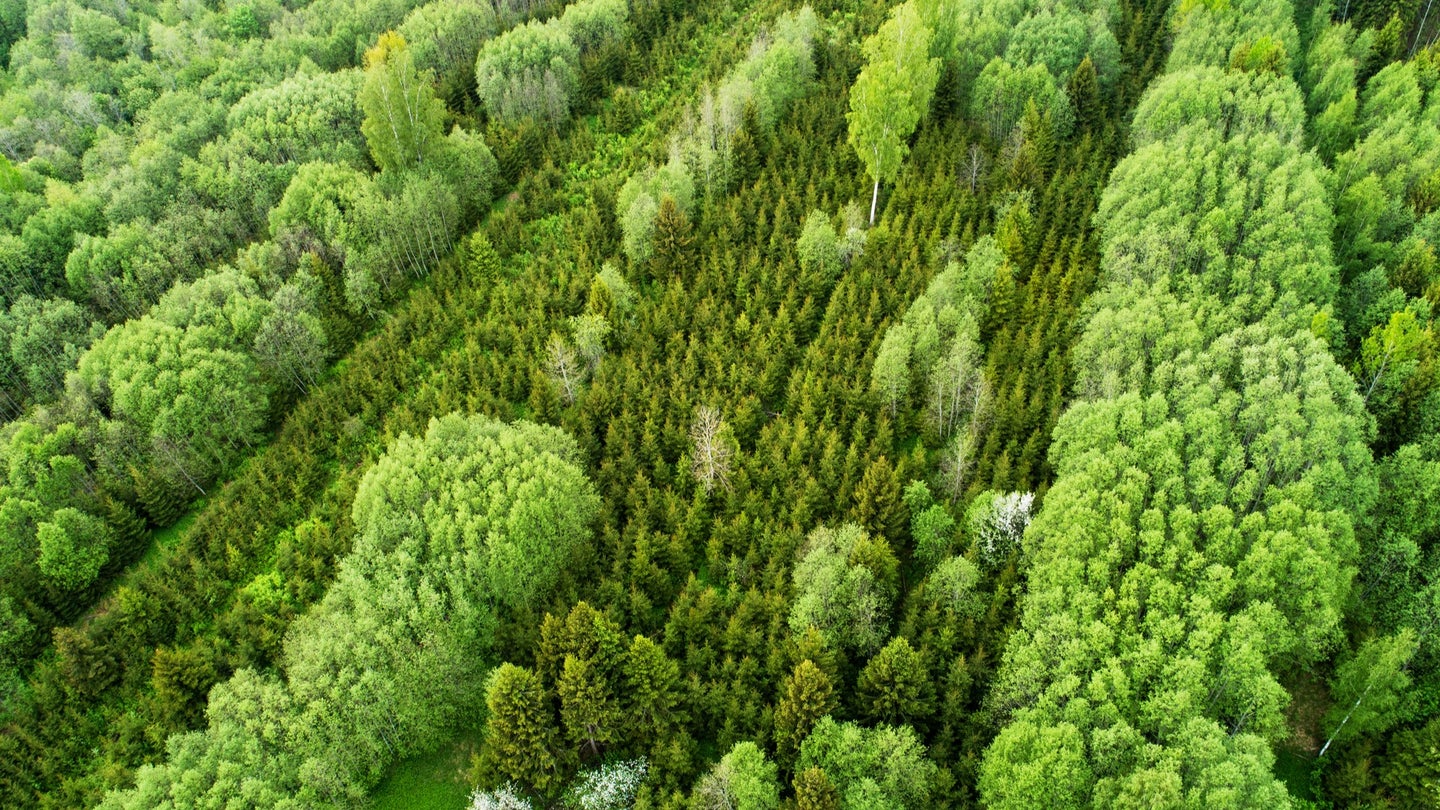Tree plantations try to offset our carbon pollution. Here’s the problem.
Viewing trees as industrial or climate assets isn't the full picture of their value.

Trees are magicians with carbon, pulling it out of the air at remarkable rates to store it in their bodies. They are so good at removing this greenhouse gas that “planting trees” is often synonymous with doing environmental good.
And lots of people are planting trees. The number of tree-planting organizations has grown by almost 300 percent in the past 30 years, according to a 2021 paper in the journal Biological Conservation. Those groups have planted nearly 1.4 billion trees across 74 countries since 1961. But while tree planting can capture a great amount of carbon, it is hardly a silver bullet for the climate crisis—experts estimate that even if we maximized our available lands for trees, this alone would not be enough to counteract anthropogenic carbon emissions. Plus, many plantations grow the same few species in monocultures, which can hurt local biodiversity.
A planted tree will suck up carbon regardless of species or its planters’ motivation. But it’s difficult to make blanket statements about the efficacy of carbon capture forestry: Tree plantations are found all over the world, surrounded by different ecosystems with their own native species and local populations who live and rely on these lands—there will be no “one tree fits all” solution.
[Related: A beginner’s guide to selecting, planting, and protecting a new tree]
The minority of tree plantations are set up with carbon capture solely, or even primarily in mind, says Jacob Bukoski, a forestry scientist at Oregon State University. Most trees are planted with the goal of harvesting timber or wood pulp for paper. Tree-planting organizations are more likely to create plantations for agroforestry or commercial reasons, the authors of the 2021 paper also note, rather than for biodiversity or carbon capture.
These groves sometimes support voluntary carbon markets, also known as carbon offset markets, where corporations pay for activities like planting trees as a way to offset their total emissions. People tend to like using carbon credits for tree plantation over other options because the goal is clear, Bukoski says. You can tangibly understand that your carbon offsets will result in planted trees that are ideally managed and monitored afterward. But only a small minority of trees are planted for these carbon markets, he says.
In forestry, there’s a saying that you have to plant “the right tree in the right place, for the right reason.” But when many tree plantations are established for commercial purposes, the tree that is planted is often not the “right” tree, says Jesús Aguirre-Gutiérrez, an ecologist at the Environmental Change Institute at the University of Oxford.
In a paper published recently in the journal Trends in Ecology & Evolution, Aguirre-Gutiérrez and colleagues argue that focusing on the goal of carbon sequestration causes organizations to ignore the importance of restoring balanced ecosystems. Globally, tree plantations tend to plant the same species such as teak, eucalyptus, mahogany, and a few others valued by the timber, paper, and other industries, Aguirre-Gutiérrez says. The result is a swath of trees that do not support local organisms or promote biodiversity in the way native plant species would have.
[Related: We need billions more baby trees to regrow US forests]
These problems are present in plantations all over the world, but Aguirre-Gutiérrez and his colleagues are particularly concerned about the tropics. Land there is vast, and conditions such as stable temperatures and high humidity promote tree growth—“that’s why there’s been a boom in plantations in these locations,” he says. At the same time, the tropics are host to an incredible variety of plants and animals found nowhere else. Ignoring them while planting trees is damaging. When plantations increased the woody cover of the Brazilian savannah by 40 percent, this “resulted in an about 30 percent reduction in the diversity of plants and ants,” Aguirre-Gutiérrez and his co-authors write in the new paper.
Aguirre-Gutiérrez doesn’t want to discourage people from growing more trees, he says. Rather, we need a better way to protect the natural ecosystems and species there, like encouraging the restoration of native forest tree species. Local plants will be “better adapted to the conditions” in these environments, he says, which means they, and nearby species, are more likely to thrive. “If we go in that direction, that will bring us the added value of capturing carbon, but also this sustainability.”
When assessing the utility or good of a tree plantation, “there’s a lot of nuance,” says Bukoski, and often cases need to be evaluated individually. For example, a plantation where the trees will be harvested for timber won’t provide long-term carbon capture benefits—does that make it not worthwhile? That’s not a conclusion you can necessarily draw without more information, he says.
Aguirre-Gutiérrez says we need more research quantifying the impacts tree plantations are having on their local ecologies, and the populations of people living in those areas, beyond carbon. “Because at the end of the day, the impacts of these plantations are going to be first felt by these local communities.”